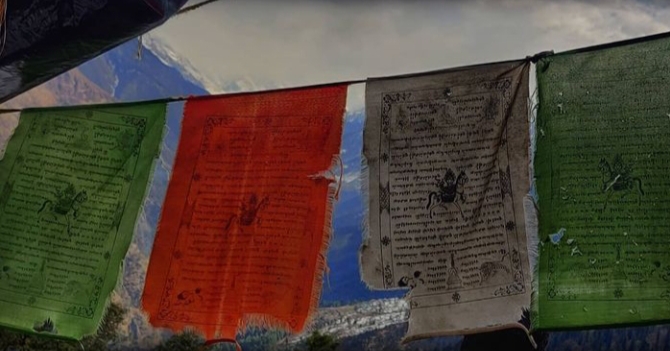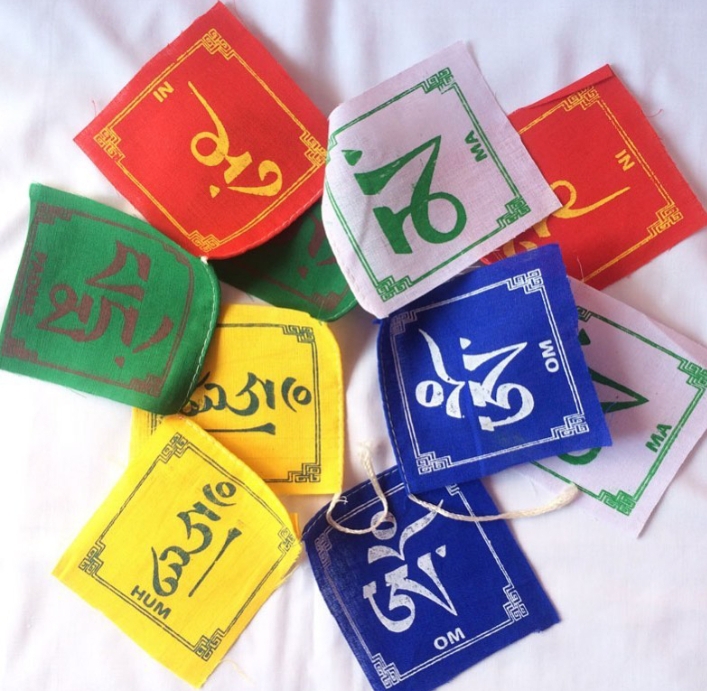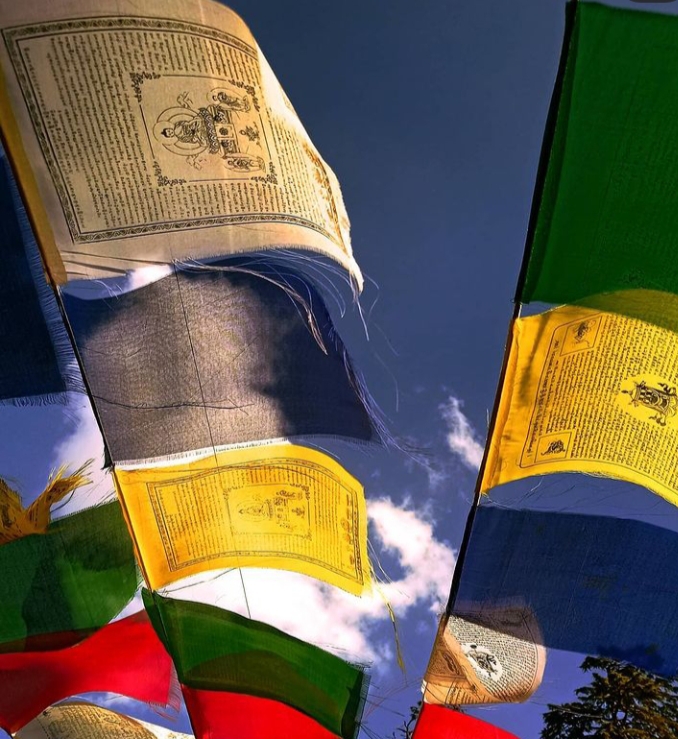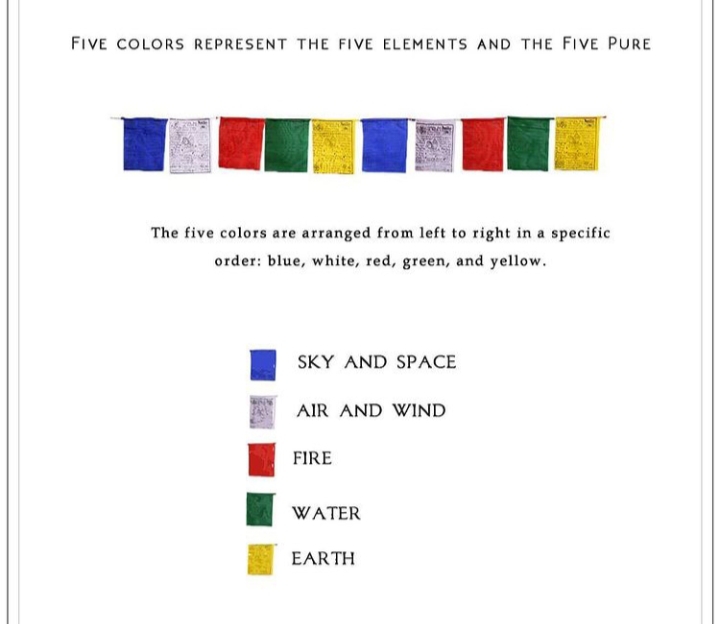Tibetan Buddhist prayer flag, which has a rectangular piece of cloth that comes in the form of five different colors is often hung at various natural features for the benefit of all sentient beings to promote compassion, peace, and wellness.
“When one’s spiritual needs are met by untroubled inner life. Happiness comes when your work and words areof benefit to yourself and others.”

Table of Contents
When was the Buddhist prayer flag create?

The five-colored Buddhist prayer flags have their own symbolic history behind them with its tradition being linked to the time of Lord Buddha. According to some sources, the Devas (Non-human entity – Lha) in their realms use to carry the teaching of the Lord Buddha’s prayer written on the flag with them into the battle with the Asuras (Non-human entity- Lha ma yin). Their primary intention behind doing this activity was to subjugate the realms of Asuras who mostly indulge in immoral acts and subsequently preach the teachings of Lord Buddha.
Tibetan Buddhist prayer flag
However, in Tibet, the existence of the prayer flag ( Lung Ta Dar Cho) can be seen much prior to the official recognition of Buddhism as the mainstream religion of the country. For Buddhism to place its strong foothold in Tibet, it did face many obstacles in the form of backlash from the existing staunch believers of the Bon religion. But at the end of the eighth century, Buddhism became the predominant religion in Tibet and it should be fair enough to say that in some cultures, the symbolism of Tibetan Buddhism has its origin rooted in the already degraded Bon religion.
In the pre-Buddhism era of Tibet, the people living there mostly indulged in shamanistic faith, idol worships, other rites, and rituals done for the purpose of pleasing the local deities, spirits. The flags were tied at the riverside, mountains, and other natural features to appease the local spirits. The prayer flag in Tibetan means (Dar Cho) where “Dar” means to increase life, fortune, and health “Cho” means for all sentient beings.
Why do Buddhist use Prayer flag?
It is important to understand that on the faces of the flag, the holy virtuous words of the sacred text were being imprinted on them. The vibrations, that were activated by the wind carry all the holy blessings so that all who were touched by the wind were blessed with the sacred words of great masters. Hence, it is worth considering that the tradition of tying the traditional prayer flags is for the welfare of all sentient beings, not the individual who hangs them.

Just as the belief that an ink drop permeates its particles to the whole of the ocean, a prayer dissolved in the wind can extend to all inter particular spaces thereby reaching onto the greater portion of life forms. Often, the flags have been referred to as “The blessings are spoken on the breath of nature”.
After the flags become worn out and old, they should be burned so that the smoke carries the prayer within them and their blessings to the heavenly abode.
What does the five colors represent in Buddhism?
It is wrong to assume that the prayer flags are meant for shows and decorations as the prayer flags are bright and beautiful in the form of colors. Each hue signifies an element of the earth and accordingly, they are arranged in a specific order. Starting from the left, blue, white, red, green, and yellow as it completes the five different colors of the prayer flags.

- Blue represents the blue sky
- White represents the colorless air
- Red symbolizes the fire
- Green represents the water
- Yellow represents the land
All five when hung in together signify balance.
Related Articles

